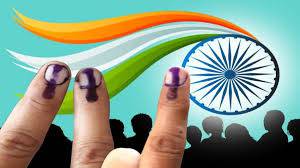Disclaimer: The points posted in the article are only points stated in the NEP 2020. This article does not promote nor discourage the Policy. Any other policy which may not have been included is to be understood as "under discussion" or "not finalized for implementation"
The Union Cabinet approved a newer version of the National Education Policy (NEP) on the 29th of July 2020, after a 34-year gap. As claimed, it is a policy and not a law yet. The implementation of its proposal depends on further regulations by various States and the Centre, as education is a concurrent subject. The policy hopes to transform the education system by 2040, roughly when our future generations would adapt to the fully extended version of this policy.
Some of the key proposals that the NEP 2020 has to offer include:
-
Internships at a school level
Students often attend internships during college and are barely exposed to the real world before they reach that stage. The introduction of learning-centered internships, as proposed by the NEP, will aid students in getting a feel of real-world learning during their time at school.
-
Addition of breakfast to the platter
Mid-day meals are already a part of the facilities provided to students in various schools. In addition to this, the NEP aims to provide breakfast to the students too. Initiated by Sri. Kamarajar, and further improvised by Dr. MG Ramachandran, the Mid-day meal scheme offers nutritious lunch for many students at government schools. The breakfast distribution scheme will look to build on these healthcare lines.
-
The abolition of the M Phil program
Being dream come true for academicians, the NEP will no longer feature the M. Phil program. The M Phil program has often been rendered as redundant, as the curriculum offered under M. Phil is often seen as a repetition of topics covered under other degrees.
-
Multiple entries and exit schemes
Undergraduate courses will be more student-friendly, as they are set to offer multiple entry/exit points for students during the course. Suppose a student studies for two years and chooses to take a break. In such a scenario, the student will still get a certificate mentioning the same. It will eventually add value to the students' credentials. In addition to it, a bank of credits will be introduced to aid students in making their academic decisions more flexible.
-
Flexibility in subject choosing
The NEP aims at giving students the right to choose their subjects, thus bridging the gap between students belonging to different streams. For example, providing an engineering student the option to select a non-major yet passion focused skill, like Physics or Music, will boost both the career and passion morale for students.
-
Participation of foreign universities, with fee caps
The NEP focuses on allowing foreign universities to set up branches in India to facilitate students who wish to study in reputed universities outside India but find it hard to afford it. The setting-up of these universities come with a fee cap. This move eventually makes it advantageous for students in terms of quality and expenditure.
-
5+3+3+4 years structure
The current 10+2 years structure will be converted into 5+3+3+4 years, ensuring adequate base support for skill-building by introducing skills like coding at an early age. By doing so, students get to work and build on many skills from an early stage of schooling. The National Education Technology Forum will also play a vital role in imbibing and introducing ideas for the use of technology across the education fraternity.
Along with the above-mentioned points, the NEP also has several other points. These may be implemented as they are, or may undergo changes, after elaborate discussions by academicians and other stakeholders. We will be witness to the kind of change NEP will bring about to the current system, and the extent to which it will be beneficial is subject to the way it is implemented, changes that will be made in the future, and its reception by students and teacher alike.
The NEP document can be accessed below:
https://static.pib.gov.in/WriteReadData/userfiles/NEP_Final_English_0.pdf





